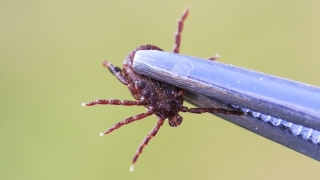Removing Ticks: The Dos and Don’ts
Published on
Health Tip of the WeekPublished on
Health Tip of the Week For such tiny insects, ticks certainly instill big fears in both kids and adults — and for good reason: Some carry Lyme disease, the most commonly reported insect-borne illness in the United States.
For such tiny insects, ticks certainly instill big fears in both kids and adults — and for good reason: Some carry Lyme disease, the most commonly reported insect-borne illness in the United States.
Making matters worse, many parents are unsure of the best way to remove a tick once spotted on the skin. “Sometimes, parents bring kids in with ticks still clinging to their skin and ask us to remove them,” says Naline Lai, MD, a CHOP pediatrician, and co-founder, with Julie Kardos, MD, of the Two Peds in a Pod blog.
But tick removal is safe and simple to do on your own and at home. To save you the trip to your pediatrician, here are Dr. Lai and Dr. Kardos’ dos and don’ts for plucking the bugs off:
Contributed by: Naline Lai, MD, FAAP, Julie Kardos, MD, FAAP
Are you looking for advice to keep your child healthy and happy? Do you have questions about common childhood illnesses and injuries? Subscribe to our Health Tips newsletter to receive health and wellness tips from the pediatric experts at Children's Hospital of Philadelphia, straight to your inbox. Read some recent tips.